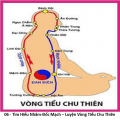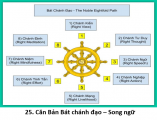Trust In Mind
Tín Tâm Minh
English: Barbara Hillmer
Việt ngữ: Thích Thanh Từ, Thuần Bạch, Thuần Tỉnh & Ngọc Bảo
Compile: Lotus group
12. Tổ Tăng Xán: Tín Tâm Minh - Seng-ts’an Patriarch: Faith in Mind – Song ngữ
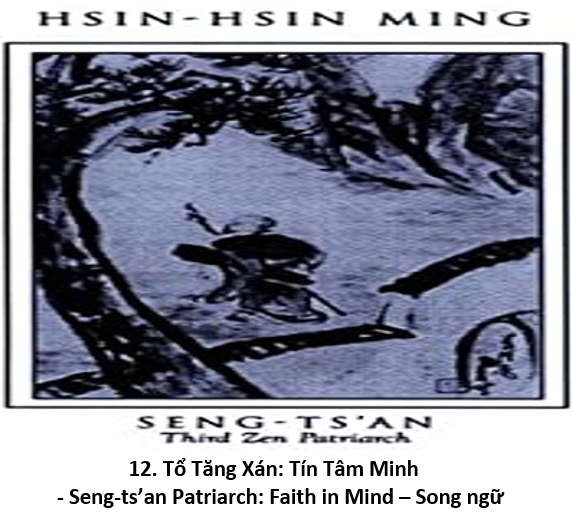
12. Tổ Tăng Xán: Tín Tâm Minh - Seng-ts’an Patriarch: Faith in Mind – Song ngữ
INTRODUCTION
LỜI DẪN
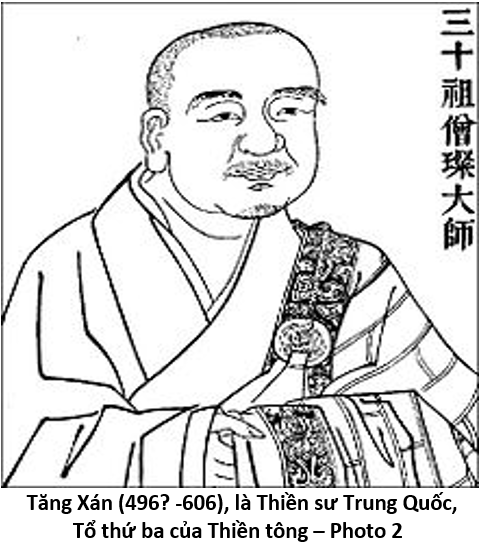
Tăng Xán (496? -606), là Thiền sư Trung Quốc,
Tổ thứ ba của Thiền tông – Photo 2
The following is a commentary on “Trust in Mind” (Hsin Hsin Ming), a treatise written by Seng-ts’an the third Zen patriarch after Hui-k’o. Hui-k’o received the transmission from Bodhidharma, the first Zen patriarch of China. During his lifetime, because Buddhists were being persecuted, Seng-ts’an could not teach the Dharma freely, and he had only one disciple who received the transmission from him. That disciple was Tao-hsin.
Nay tôi (Hòa Thượng) giảng bài Tín Tâm Minh của tổ Tăng Xán. Tổ Tăng Xán là tổ thứ ba, đệ tử của nhị tổ Huệ Khả. Tổ không có đi truyền bá giảng dạy sâu rộng, [vì Phật tử bị đàn áp], chỉ có một người đệ tử thừa kế là ngài Đạo Tín.

Photo 3: Tổ Tăng Xán: During his lifetime, because Buddhists
were being persecuted, Seng-ts’an could not teach the Dharma
freely, and he had only one disciple who received the
transmission from him. That disciple was Tao-hsin.
The only writing left by Seng-ts’an was “Trust in Mind,” a brief writing in verse which expresses the main meanings of Zen. To learn Zen Buddhism, we study the Platform Sutra, but we must also study “Trust in Mind.” All of the essence of Zen is contained in the words and verses of this short writing. Hsin Hsin means to have faith in our own mind. Ming means to note, to inscribe this treatise for the purpose of guiding readers in their practice following the path towards enlightenment.
Tổ chỉ để lại có một tác phẩm Tín Tâm Minh, một bản văn rất gọn và đầy đủ ý nghĩa trong nhà thiền. Học thiền, chúng ta học Pháp Bảo Đàn mà không học Tín Tâm Minh là không được. Tổ tóm gọn tinh yếu của Thiền qua bao nhiêu lời, bao nhiêu chữ, đề tựa là Tín Tâm Minh. Tín Tâm là tin tâm mình. Minh là ghi khắc lại cho người đọc nương theo tu tập để nhận ra tâm mình.
Vietnamese notes:
Ghi chú:
The four most important steps of a Buddhist in practice:
Bốn bước quan trọng nhất của một người Phật tử trong sự tu tập:
The four most important steps are:
Bốn bước quan trọng đó là:
- Vị ngã (biết mình [knowing ourself]).
- Vị tha (biết người [knowing others]).
- Vô ngã vị tha (quên mình [centerless] khởi lòng từ [loving-kindness] để giúp người bất hạnh).
- Bất nhị (tánh không phân biệt [non-duality]).
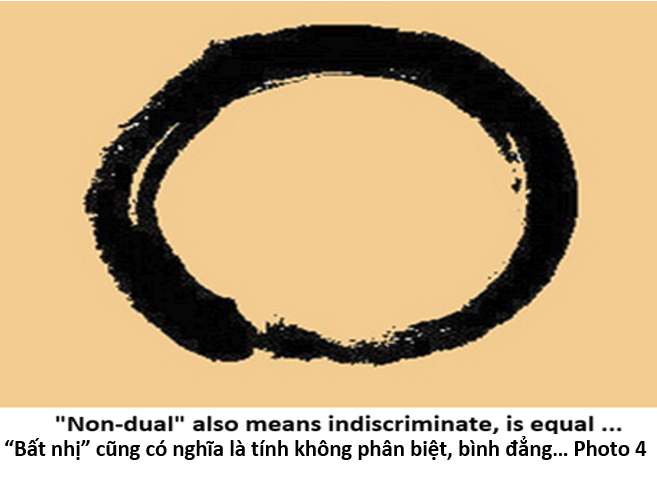
“Bất nhị” cũng có nghĩa là tính không phân biệt, bình đẳng… Photo 4
- Cultivating a Non-dual Mind
Tín Tâm Không Hai
- The Ultimate Way is not difficult
Chí đạo vô nan, Chí đạo không khó,
- For those who have no preferences.
Duy hiềm giản trạch. Chỉ hiềm lựa chọn.
The Ultimate Way is also called by other names such as the Great Way, Buddha nature, the true essence, etc. It’s not impossible for us to realize our Buddha nature and live our lives by it, but because we always discriminate and have preferences whenever we meet the objects of our senses, it becomes difficult.
Chí đạo có chỗ gọi là chân tâm, Phật tánh, Đại đạo. Đối với Phật tánh, chúng ta muốn sống được không phải khó. Sở dĩ khó là tại chúng ta chọn lựa, nghĩa là đối với cảnh liền sanh tâm phân biệt tốt / xấu, hay / dở… là trái với đạo rồi.
A discriminating mind, always debating what is good or bad, right or wrong, is a deluded mind. Our discriminations take us away from the Way. If we let go of this deluded mind, our true essence will become apparent.
Chúng ta muốn sống được với tâm thể chân thật chỉ đừng khởi tâm phân biệt chọn lựa, vì chọn lựa là tâm hư vọng. Nếu không sống với tâm hư vọng thì tâm chân thật hiện ra.
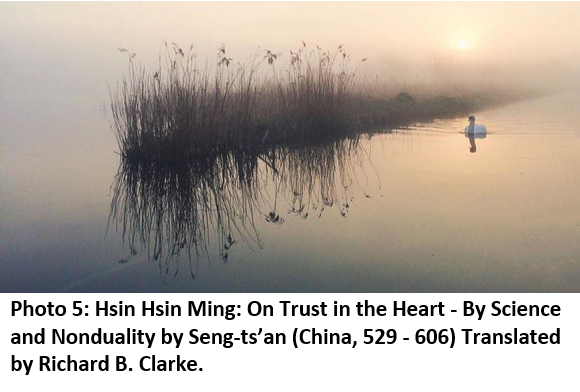
Photo 5: Hsin Hsin Ming: On Trust in the Heart - By Science
and Nonduality by Seng-ts’an (China, 529 - 606) Translated
by Richard B. Clarke.
The Third Patriarch was Seng-ts’an (Jianzhi Sengcan 526-606). His name means the “Jade of Sangha.”
Tam tổ Giám Trí Tăng Xán (526-606), tên Tăng Xán có nghĩa ‘viên ngọc của tăng-già.’
Apart from “Trust in Mind,” his only teaching, carved on the stone tablet at his memorial, says, “Simultaneously practice Stillness and Illumination. Carefully observe, but see no dharmas, see no body, and see no mind, for the mind is nameless, the body is empty, and all dharmas are a dream.
Ngoài bài Tín Tâm Minh, tổ chỉ còn một lời dạy duy nhất khắc trên viên đá tri niệm là: ‘Đồng thời tu tịch và chiếu. Quan sát miên mật, nhưng thấy không pháp, không thân và không tâm. Bởi vì tâm không có tên tuổi, thân là không và pháp là hư huyễn.
There’s nothing to be attained, no enlightenment to be experienced. This is called liberation.”
Không có gì để được, không có giác ngộ để chứng. Đây gọi là giải thoát.’
“Stillness” is silently going and coming and being in Right Samadhi (empty mind) and within it there is “illumination” (wisdom) that is the ground of Emptiness. False Samadhi is that stillness whereby we may gain supernatural powers but not wisdom.
Tịch là dù đi dù đến đều tĩnh lặng và sống trong chánh định (Không), trong đó có chiếu tức huệ (nền của cái Không). Trong khi tà định có thể có thần thông nhưng không có huệ.
We can realize the Way in the interval of stillness between two thoughts. The Way is ever-existing, and never far from us, but we cannot recognize the Way because it is obscured by Greed, Anger and Unawareness.
Chúng ta có thể chứng nghiệm Đạo nơi khoảng lặng giữa hai niệm tưởng. Đạo luôn hiện hữu, chưa bao giờ rời xa chúng ta, chỉ vì tham-sân-si che đậy nên chúng ta không nhận ra.
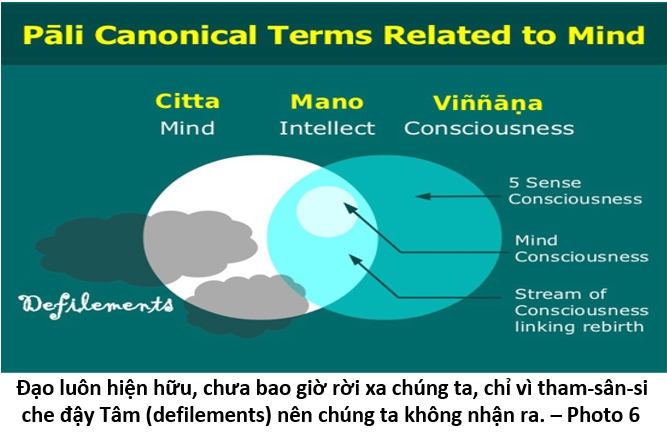
Đạo luôn hiện hữu, chưa bao giờ rời xa chúng ta, chỉ vì tham-sân-si
che đậy Tâm (defilements) nên chúng ta không nhận ra. – Photo 6
Within the Chinese character “信” (Hsin - Trust) there is the ideogram “亻” as the person standing upright, with self-assurance. This trust in the mind is directly experienced through intuition, which is Prajna Wisdom, and a strong conviction coming out of that experience. Faith is the beginning of practice and through practice we attain wisdom. This wisdom will make our faith increase until we become enlightened. As the Sutra of Mahanibbana says, “Great faith is nothing else than Buddha Nature.”
Tín “信” - chữ Hán có bộ nhân đứng “亻” - có nghĩa là đặt niềm tin vào chính mình – tin tâm mình là Phật và tu tập để trực tiếp chứng nghiệm Phật tâm bằng trực giác là trí Bát-nhã, và niềm tin kiên cố sẽ đến từ chứng nghiệm này. Lòng tin là bước đầu tu tập và qua tu tập chúng ta đạt được trí tuệ. Trí tuệ này sẽ tăng trưởng lòng tin đến khi giác ngộ. Như kinh Niết-bàn nói ‘Đại tín không gì khác hơn là Phật tánh.’
- If you have no likes or dislikes
Đản mạc tắng ái, Chớ khởi yêu ghét,
- You will clearly undisguise everything.
Đỗng nhiên minh bạch. Rỗng suốt minh bạch.
To like and dislike, or to love and hate is the root of our birth and death cycle. If we have no love or hatred, and no likes or dislikes, our minds will be empty and clear.
Yêu ghét là gốc của sanh tử luân hồi, hết yêu ghét thì tâm rỗng rang, sáng suốt.
You need not go far away to the mountain or the deep forest to search for the Way. You need only to get rid of your choosing mind, to let go of your likes and dislikes. Then the Way will be right here with you.
Không cần tìm kiếm đâu xa, không phải lên núi cao, vào rừng rậm mới có đạo, mà chỉ dứt sạch tâm chọn lựa, buông được cái yêu ghét thì đạo hiện tiền.
Likes and dislikes denote discrimination, as the Visudhimagga, the classical compendium of Theravada teachings, defines it: “The function of Equanimity (the sameness or oneness of mind) is to see equality in all beings and phenomena.”
Yêu ghét chỉ cho phân biệt đối đãi, như sách Thanh Tịnh Đạo (Visuddhimagga) trong kinh Nguyên Thủy nói: ‘Hạnh xả là thấy tất cả chúng sanh bình đẳng.’
In practice, when we let go of the discrimination aspect of mind-consciousness, the differentiation aspect of mind-consciousness will be transformed into differentiation-wisdom in the equality (but not identicality) of the mind, and the whole mind- consciousness will be transformed into the wisdom of wondrous observation.
Khi tu hạnh xả, ta buông bỏ đặc trưng phân biệt của ý thức, trong khi đặc trưng sai biệt của ý thức sẽ chuyển thành trí sai biệt trong tính bình đẳng (không phải là đồng đẳng), và toàn bộ ý thức chuyển thành diệu quan sát trí.

Khi tu hạnh xả, ta buông bỏ đặc trưng phân biệt của ý thức,
trong khi đặc trưng sai biệt của ý thức sẽ chuyển thành trí
sai biệt trong tính bình đẳng …Photo 7
- If you make the slightest distinctions,
Hào ly hữu sai, Sai lạc đường tơ,
- You will be as far from the Way as Heaven is from Earth.
Thiên địa huyền cách. Đất trời xa cách.
Even the slightest deviation from correct practice will take you away from the Way as far as Heaven is from Earth. If you want to practice the right Way, you have to understand the root teachings of Buddha. Do not follow in your search for Nirvana or enlightenment, because as soon as the idea that you can search for Nirvana arises or you try to attain the Way, you will deviate from the Way as far as Heaven is from Earth.
Nếu sai chừng một hào một ly thì cách xa bằng trời với đất. Đối với việc tu hành chúng ta phải hiểu đến cội gốc, chớ khởi niệm tìm cầu Niết-bàn, tìm cầu chứng đắc. Vừa khởi niệm tìm cầu là sai, là cách xa Đạo bằng trời với đất.
In studying the various aspects of Buddhism, which are similar to the multiple branches of a tree, we must remember to follow them back to the source, the root teachings of Buddha. In our practice also, we need to have a thorough grasp of the essential guidelines and not allow ourselves to be distracted from our method. We should have the utmost trust in our Master.
Khi học Phật trên nhiều phương diện, giống như nhiều nhánh ngọn của một cội cây, chúng ta cần tìm hiểu tận gốc rễ lời dạy của đức Phật. Trong thực hành thì phải nắm vững pháp tu chính yếu không được lơi lỏng, trong đó phải đặt niềm tin tuyệt đối vào vị thầy.
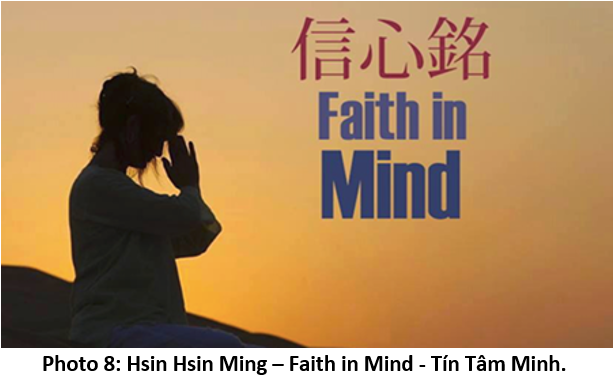
Photo 8: Hsin Hsin Ming – Faith in Mind - Tín Tâm Minh.
Practice on the cushion: Let go of all wandering thoughts without any control or pressure. Oppression will create conflict, hence far from the Way.
Tu trong tịnh: Buông vọng, nhưng không chế ngự đè nén, vì như thế sẽ gây ra xung đột thì càng xa đạo.
Sources:
Tài liệu tham khảo:
- https://tienvnguyen.net/a821/tin-tam-minh-trust-in-mind
- Photo 1: https://www.amazon.com/Hsin-Hsin-Ming-Verses-Faith-Mind-Paperback/dp/B00RWU720W
- Photo 2: http://hoathuctuvien.blogspot.com/2015/05/tang-xan-tin-tam-minh.html
- Photo 3: https://en.wikipedia.org/wiki/Sengcan
- Photo 4: http://evdhamma.org/index.php/documents/collections/doing-good-deeds/item/1003-coi-chi-tay-bill-gates-song-ngu
- Photo 5: https://www.scienceandnonduality.com/article/hsin-hsin-ming-on-trust-in-the-heart
- Photo 6: http://evdhamma.org/index.php/dharma/dharma-lessons/item/1084-hieu-ve-tam-song-ngu
- Photo 7: http://evdhamma.org/index.php/dharma/dharma-lessons/item/1071-hay-tap-buong-xa-song-ngu
- Photo 8: https://creativesystemsthinking.wordpress.com/2017/04/03/hsin-hsin-ming-信心銘 – Faith in Mind/


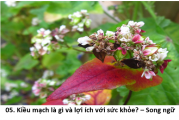
![[7-12] - Chuyện Vui Ngắn - Short Funny Stories – Song ngữ [7-12] - Chuyện Vui Ngắn - Short Funny Stories – Song ngữ](/images/resized/59b514174bffe4ae402b3d63aad79fe0_7-12._title_224_120.png)
![[13-20] - Chuyện Vui Ngắn - Short Funny Stories – Song ngữ [13-20] - Chuyện Vui Ngắn - Short Funny Stories – Song ngữ](/images/resized/fa447a14965dfd70772de1948c4d467d_13-20._title_224_120.png)
